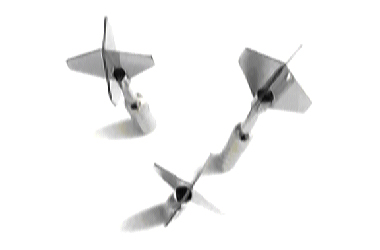Main Menu
- Home
- Product Finder
- Calibration Systems
- Calibration Services
- Digital Sensing
- Industrial Vibration Calibration
- Modal and Vibration Testing
- Non-Destructive Testing
- Sound & Vibration Rental Program
- Learn
- About Us
- Contact Us
 Consider the equation for accelerometer calibration, Vref/Vsut = Sref/Ssut, which states the ratio of the accelerometer output (both reference and sensor-under-test) voltages must be equal to the ratio of their respective sensitivities. Because of
the ratio nature of the voltage measurement, it is easy to see that if an external factor effects the voltage measurement of both the reference and SUT in an identical manner, then overall effect on the calibration may be zero (i.e. if the external factor appears as a scalar quantity in both the numerator and denominator of the equation, the term will drop out).
This aspect of comparison style accelerometer calibration is particularly useful since the advancements in voltage measurement techniques have become recognized by the calibration community in the past decade.
Consider the equation for accelerometer calibration, Vref/Vsut = Sref/Ssut, which states the ratio of the accelerometer output (both reference and sensor-under-test) voltages must be equal to the ratio of their respective sensitivities. Because of
the ratio nature of the voltage measurement, it is easy to see that if an external factor effects the voltage measurement of both the reference and SUT in an identical manner, then overall effect on the calibration may be zero (i.e. if the external factor appears as a scalar quantity in both the numerator and denominator of the equation, the term will drop out).
This aspect of comparison style accelerometer calibration is particularly useful since the advancements in voltage measurement techniques have become recognized by the calibration community in the past decade.
The historical method of accelerometer calibration through RMS (voltage meter) based calibration systems is susceptible to additional uncertainty caused by distortion. Modern calibration systems implementing the Discrete Fourier Transform (DFT) do not share this same limitation. Hence, modern DFT based systems can provide better uncertainties. RMS based systems measure the output of the accelerometer across all frequencies. In some cases, the frequency response of the reference and Sensor-Under-Test (SUT) will be nearly identical and the distortion will have little effect on the results; however if the distortion occurs in the non-linear portion of the sensor’s frequency response, significant measurement error can occur.
For example, assume you are calibrating a sensor at a 2 kHz and 10 g acceleration level. The exciter you are using has 5% harmonic distortion at the first harmonic (4 kHz). If both the reference and SUT have a “flat” frequency response to 10 kHz, both sensors would effectively measure 10.5g (10g + (0.05*10g*1.0)) and there wouldn’t be any effect on the calibration results. Now let’s assume the reference is “flat” to 10 kHz, but the SUT has a 50% increase in sensitivity at 4 kHz compared to 2 kHz. The reference would now effectively measure 10.5g at 4 kHz (10 + (0.5*1.0)), but the SUT would measure 10.75g at 4 kHz (10 + (0.05*10g*1.5)) causing the sensitivity to be calculated approximately 2.3% high.
Another situation that affects an RMS method is the presence of out-of-band noise when the noise is not identical between channels. The RMS energy of the noise would be added to the measured value and would cause an error in the results. By processing at individual spectral lines with the DFT method, all out-of-band energy is ignored and therefore does not affect the results. This is particularly apparent if either the reference or the SUT is near its broadband resolution value (noise floor) where noise from the sensor is a significant factor.
Under the DFT method, only the frequency of interest is analyzed and the “out of band” signal is ignored. An analog equivalent to this would be to use an arbitrarily narrow band-pass filter at the frequency being calibrated. ISO 16063 Part 21 supports this by stating that the harmonic distortion should be measured in suitable intervals unless a narrow-band measurement technique is used (Section 4.4 and 4.6).
Additionally, the DFT method allows one other unique opportunity to improve uncertainties of calibration systems – the ability to calibrate gain within data acquisition and signal conditioning at discrete frequencies by simultaneously inputting the same signal into both the reference and SUT data acquisition channels. The measured difference between the channels at individual frequencies can be used by the system to correct these systemic errors and improve the calibration results. This example of “channel calibration” for improved uncertainty can also be performed on the SUT signal conditioner. If you are interested in more information on these or any of the other recent improvements in accelerometer calibration, just contact us and we will be glad to help you out.